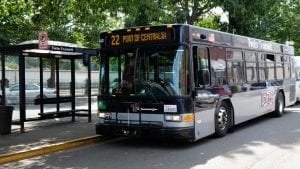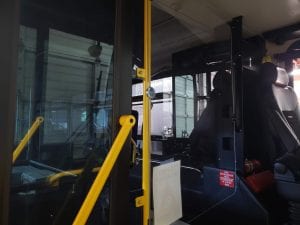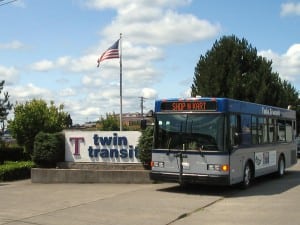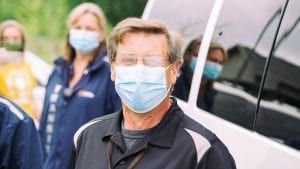As Lewis County reopens, Twin Transit remains committed to safeguarding the health of riders and drivers. Board with confidence, knowing that Twin Transit’s health and safety protocols are built on Lewis County Health and the Centers for Disease Control and Prevention guidance.
Safely Moving Forward

Following CDC guidelines, Twin Transit has developed innovative solutions to continue serving those who rely on public transit to access work, education and essential amenities.
Personal Protective Equipment
Wearing a face covering is now required statewide and on all Twin Transit buses. Face coverings help slow the spread of COVID-19 and protect the health of fellow passengers and drivers. Passengers are also asked to wear masks and socially distance at bus stops if others are present.
Social Distancing

Certain seats have been strategically sectioned off to keep riders at a safe social distance. Plexiglas shields have also been installed on each bus. Now it’s easier to board and disembark from the bus while maintaining a safe social distance.
Passengers are encouraged to limit trips to reserve space for essential travel; specifically, those traveling to work, school, medical appointments, or grocery shopping.
Increased Route Frequency
Due to state-wide COVID-19 restrictions, Twin Transit buses have limited capacity. As ridership increased in response to county-wide reopening, a new model was needed to ensure safe social distancing. Twin Transit developed innovative solutions.
Increasing route frequency with service between the high-traffic hours of 10:30 a.m. to 3:30 p.m., Monday through Friday, bus stops will be serviced every 30 minutes. Service outside these hours will continue at regular intervals.
This system makes it easier to access work, grocery shopping, medical appointments, and other essentials. It will also support economic development by connecting community members with local businesses and services.
Sanitation Practices

Each evening, Twin Transit buses undergo a thorough sanitation and cleaning process. First, the bus ventilation systems are turned on and a disinfectant is lightly misted into both air intakes.
Next, high-touch surfaces are thoroughly cleaned and disinfected, including all handrails, seat grab rails, seats, stop request pull cords and touchpads, seat latches, wheelchair restraint belts and buckles, driver seatbelt buckles, dashes and switch area, steering wheel, and entryway grabrails.
The buses are also supplied with an aerosol disinfectant spray and disinfectant wipes to be used as needed.
Other Preventive Measures
Beyond following official federal, state and local public health guidance, Twin Transit is taking additional preventative measures to reduce risk to staff, including allowing all non-operational personnel to work remotely.
Passengers can avoid handling cash by using the Token Transit digital bus pass app. This is the recommended payment option but is not required.
Staying Healthy

Riders are asked to practice CDC safety precautions, including frequent and thorough hand washing, using hand sanitizer when hand washing is not possible, and cleaning high touch surfaces daily at home. Avoid contact with others who are ill and stay home if you’re feeling sick. Avoid touching your face and always cover your mouth and nose when coughing or sneezing – then clean your hands immediately afterward.
Contact the Washington State Coronavirus hotline at 1-800-525-0127 if you have any questions or concerns.
For more information, visit:
- Lewis County Public Health & Social Services
- Washington State Department of Health
- Centers for Disease Control and Prevention
Even during a pandemic, public transportation remains the backbone of mobility. Access to reliable transit is essential to economic recovery. Twin Transit continues to monitor the situation as it evolves and respond proactively, to ensure those who depend on public transit can get where they need to go – safely.
For more information on CDC bus riding recommendations, click here.













































